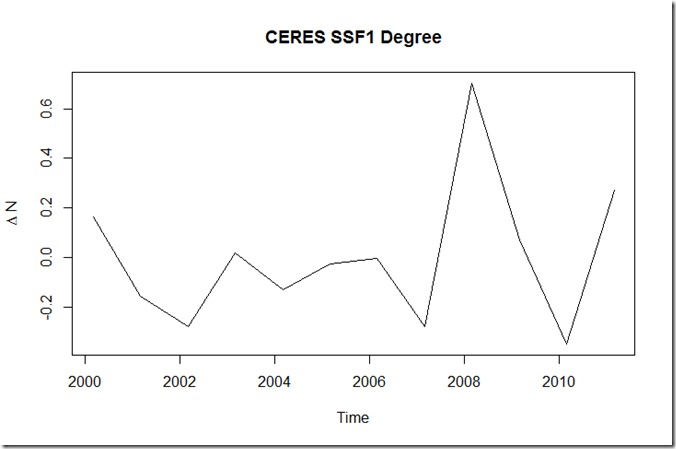There seems to be a good amount of confusion about what the "missing heat" refers to, as well as what implications the Balmaseda et al (2013) paper has for this missing heat. So first, here is my quick summary:
In many ocean datasets, there seems to be a discrepancy in the rate of ocean heat uptake up to the mid 2000s, and the uptake afterwards, with this more recent rate of uptake appearing to be smaller. However, neither models nor satellites show a decrease in the TOA imbalance (as the increased forcing should only exacerbate this imbalance). The "missing heat" means that theoretically, there should be more heat going into the ocean (that is, at the same rate as before). The other possibility is that there was "extra heat" before – that is, the discrepancy in the ocean heat uptake is an illusion, and that prior calculations were overestimating this heat uptake. This latter assumption would imply that the GCMs are generally overestimating the TOA imbalance.
Now let’s look at this within the context of Balmaseda et al., (2013):
Indeed, you can see that even in the purple line, the slope in the early part of the 2000s is larger than that of the later part of the decade. After digitizing this and calculating the TOA imbalance, I get 1.23 W/m^2 for the first part of the decade (2000-2004), and 0.38 W/m^2 for the last half (2005-2009). That is a huge discrepancy. So let’s see if we see something similar in the satellites(CERES SSF1 degree net TOA imbalance annual anomaly):
A drop of ~ 0.85 W/m^2 should be quite obvious in this graph, but there is no sign of that at all. Rather, the average imbalance from 2005-2009 is about 0.17 W/m^2 *larger* than that from 2000-2004. If we called the combined discrepancy of ~ 1 W/m^2 imbalance for 5 years the "missing heat", we are talking somewhere around 8 * 10^22 J.
Note that we are only using the satellites in this context in terms of *relative* TOA imbalance. Some are under the misconception that we are able to measure the absolute TOA imbalance via satellite, and that using ocean heat content is just a secondary check (that is, we know that the extra heat is somewhere in the earth system from satellites, and just need to look harder to find it in the ocean). This view is incorrect. As explained in Stephens et al., 2012:
The combined uncertainty on the net TOA flux determined from CERES is ±4 Wm–2 (95% confidence) due largely to instrument calibration errors. Thus the sum of current satellite-derived fluxes cannot determine the net TOA radiation imbalance with the accuracy needed to track such small imbalances associated with forced climate change
In other words, in terms of determining the absolute energy budget, ocean heat content is really the only game in town. Satellites instead provide a check in terms of the evolution of this ocean heat content data, and have managed to raise a red flag in the ocean heat uptake slowdown. In this much, I don’t see that Balmaseda et al. 2013 hasn’t really solved the case of the "missing heat", as we still see a large unexplained discrepancy in the rate of ocean heat uptake. While surface winds and deep ocean heat warming may help explain a pause in surface warming, it does not explain this lower implied TOA imbalance.
Loeb et al. 2012 essentially “solved” this problem by noting the large uncertainties in the ocean heat datasets, which implied that the apparent discrepancy was likely an artifact of inaccurate ocean measurements. Given the vastly larger coverage of ARGO from 2005 on, and the fact that these estimates range from implied TOA imbalances of ~ 0.38 W/m^2 to 0.6 W/m^2 (von Shuckmann and Le Traon, 2011; Stephens et al, 2012; Hansen et al, 2011, Masters 2013), and that we actually see a slight increase in TOA imbalance towards the later part of the CERES decade, I suspect that the huge rate of heating in the early part of the decade in Balmaseda et al. 2013 may be an artifact as well. Such would imply that the B13 primary published ocean warming of 1.19 +/- 0.11 W/m^2 in the 2000s (0.84 W/m^2 globally) may be 1.5x to 3x too high.
In the next post, I hope to look at this last point in some more depth , and at "missing heat" in terms of TOA imbalance relative to various GCMs.

